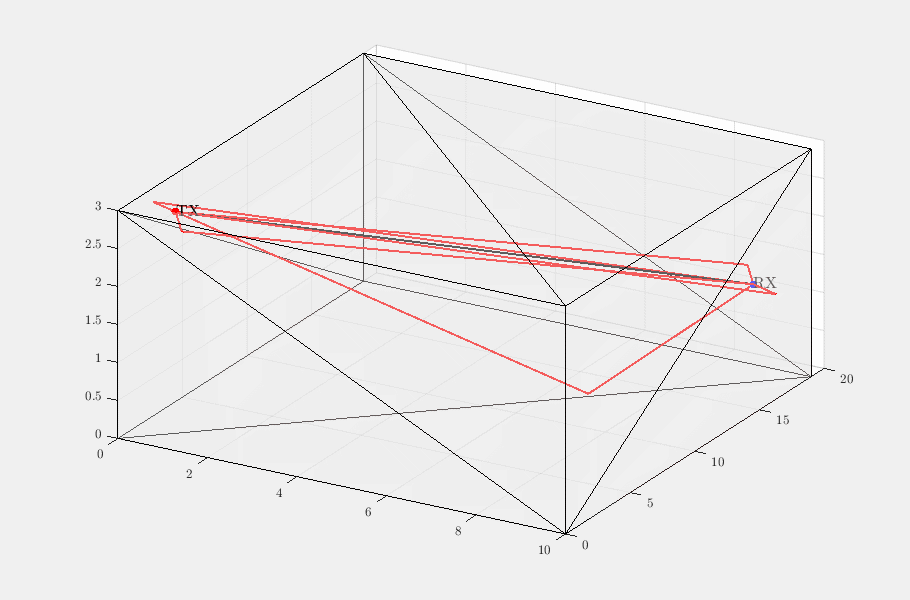A MATLAB open-source channel model specialized for mmWave RF applications.
The software does not require any installation procedure: simply download or clone the repository to your local folders.
The codebase is written in MATLAB. It is currently being tested on MATLAB R2019b, but it should be backward-compatible down to MATLAB R2016b.
No toolboxes are needed to run the code.
- Open the
main.mscript and edit the variablescenarioNameStrwith your scenario folder relative path if desired (please note that scenarios creation/configuration/interpretation is described in the documentation). - The software is configured to run the
examples/BoxLectureRoomscenario by default. - Run the
main.mscript
More details about the software can be found in the documentation (docs/Documentation.pdf).
- Open-source
- Ray-tracing based on the method of images
- Specifically tailored for mmWave propagation, considering specular reflection and ignoring diffraction
- Quasi-Deterministic ray diffusion model based on real-world measurements is included
- Material libraries for ray diffusion are also included
- Trace-based mobility is supported
- Accepts CAD files in XML and AMF formats
Feedbacks and additions are more than welcomed! You can directly contact the authors for any information.
For more information check out the CONTRIBUTING file.
| NIST | SIGNET group |
|---|---|
 |
 |
The Q-D Realization software has been developed at NIST by Anuraag Bodi, Steve Blandino, and Neeraj Varshney and maintained by Tanguy Ropitault.
The current version of the code has been developed in collaboration with University of Padova, Department of Information Engineering, SIGNET group, by Mattia Lecci and Paolo Testolina under Prof. Michele Zorzi's supervision.
You can find the detailed list of contributors here.
Please refer to the LICENSE file for more information.

